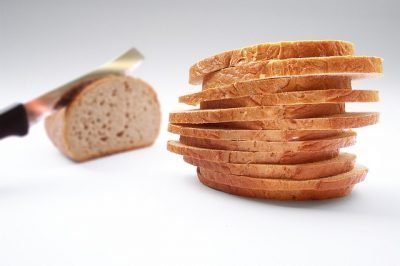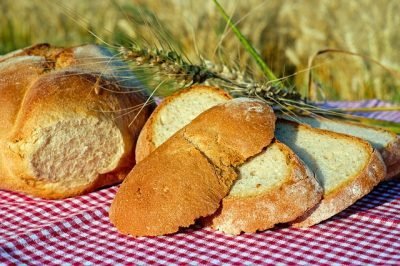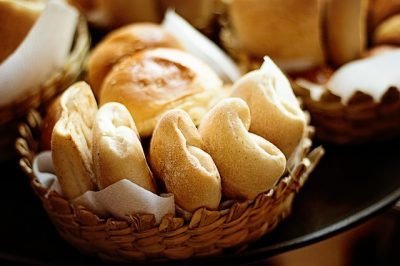Most of the time, grabbing a loaf of bread from the store is an act involving as much thought process and effort as remembering we’d run out of milk, or reaching for a carton of eggs. But where milk and eggs aren’t exactly accessible at home unless we’re running a personal farm, bread can – and should, where possible – be made at home. It’s not just the pleasant, warm aroma infusing the air and making us salivate thanks to a loaf baking in the oven, or the surprisingly satisfying pass-time of watching bread rise as it bakes – homemade bread has oodles of benefits over store-bought or commercial ones, benefits we plan to take a closer look at in this post.
Cost

Let’s go with the most practical consideration first – cost. In the grand scheme of things purchasing a loaf of bread from your local supermarket or grocery store is likely to be relatively inexpensive. Purchasing something organic or freshly baked from a boulangerie will most likely be pricier. But if you do the cost-benefit analysis of simply buying bread off the shelves to baking it at home, you’ll realize that homemade loafs are certainly more cost-effective – and not only when it comes to what we’ll broadly label as ‘fancy breads’ like ciabatta and friselle.
With a 5-pound bag of flour, a pack of yeast, some water and a few other ingredients of your choosing, you can whip together simple everyday loaves of bread at home at as little as a dollar or two per loaf – which, in the long-term, is a great economic way of going about saving some money without trading off quality or standard of living.
In fact, as we elaborate on in the next section, homemade breads are more likely to enhance the quality of what we’re eating.
Control
As much as some brands will tout their healthy goodness, additives are inevitable when it comes to extending shelf lives and keeping everything from going all gross and moldy on the way from factory to supermarket to your bread bin. Preservatives and additives don’t add any nutritional value to our food, and with the increased skepticism of conscious eaters when it comes to what we’re putting in our bodies, it’s hardly surprising that they tend to make us wary.
Additives aren’t the only things on a store-bought loaf’s ingredient list to give us pause. Sugar, salt, and trans fats – to name a few ingredients – may be incorporated in varying ratios into the bread you toast for breakfast every morning or use to make a sandwich for a quick lunch. And they’re not exactly in proportions you can control when buying pre-baked bread.
In fact, apart from flour, yeast or leavening, and a liquid, you don’t really need much else to bake bread at home – which is great considering this gives us better control over what exactly we’re eating. Hidden trans fats are often attributed to increasing risks of heart and cholesterol issues, but are often used in store-bought baked goods as a replacement for traditionally used animal fats for their better taste, texture and stability. Sugar and salt, on the other hand, are common criminals the health conscious try to moderate in our diets, which becomes difficult when we can’t quite pin how many calories we’re swallowing with every slice of store-bought bread.

All these concerns – including the actual quality of the ingredients we’re using – can be moderated when baking bread at home, so we know exactly what’s going into our bodies and in what proportions. While you’ll find endless choices of 100% whole grain or whole wheat breads stacked in grocery shop aisles, the quality of these ingredients and the credibility of these claims are always a little murky. Nutritionists recommend the high fiber, protein and nutrients packed in whole grain and whole wheat flour, and baking our own bread ensures we get to incorporate the best of these healthy ingredients into our food. This not only gives us a better grasp of our diets, but is definitely much healthier than munching on preservative-laced, trans fat heavy bread slices. Butter, margarine and other fatty ingredients can be substituted for olive oil, the finest whole wheat flour gives you the peace of mind that your breakfast is going to be as wholesome as many store-bought brands would have you believe of their products, and you get to avoid any allergens prone to causing you problems, too.
Taste

This goes without saying – homemade bread tastes infinitely and markedly better than commercially produced breads, and biting into a freshly-baked slice piping hot out of the oven is a luxury we, surprisingly, don’t have to splurge on. Fresh bread can enhance the taste of anything from a plain peanut butter and jelly sandwich to a lunch sub you whip up at home – or even something you can nibble on without embellishments, with a mug of coffee when you’re hankering for a snack.
Now, you might be feeling nervous at the prospect of kneading and baking your own bread, especially if you’re completely inexperienced at handling dough of any kind, but as with all things, practice makes perfect. Invest a little time, research and effort, and you can make quick work of whipping together the dough and going about other business as you leave it rise as the yeast does its work, repeating the cycle as many times as the recipe requires – you don’t have to anxiously watch the dough all the way from ingredient assembly to the oven. Or, if you’re not up for the time and effort required to make bread the old-fashioned way, you could invest in a good breadmaking machine to fulfill your home-baking needs just as well.
Whatever the case, bread baking can become a therapeutic if not fulfilling activity, with some of us looking forward to a weekend mass-baking session that’ll leave us flour-sprinkled and our homes smelling like a delectably warm bakery – especially fun if we get to experiment, with recipes out there for anything from oats to fruit and nut based breads. Anyone can participate, from kids to the elderly, making it a potentially fun family activity – not to mention, we get the bragging rights when we share our creations and get well-earned ooh’s, aah’s and compliments on how great our homemade loaves and buns taste. It’s not as time-consuming or difficult as you might think with some smart time-management, and at the end of the day, your body, wallet and taste buds will thank you for it.